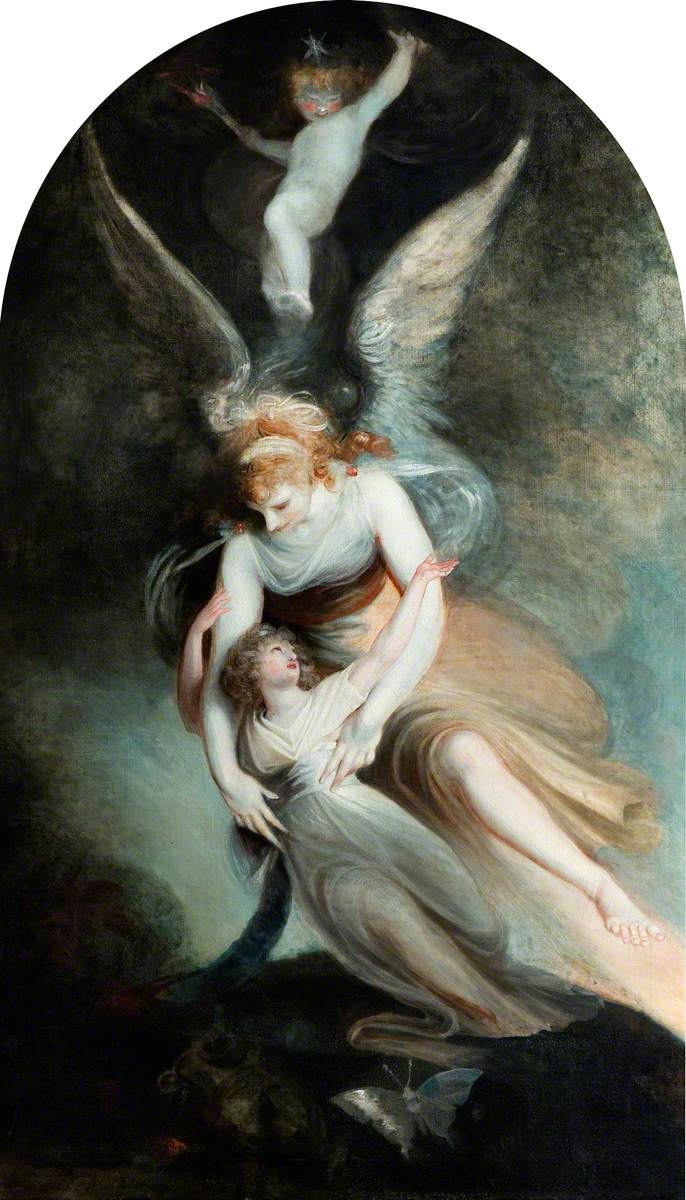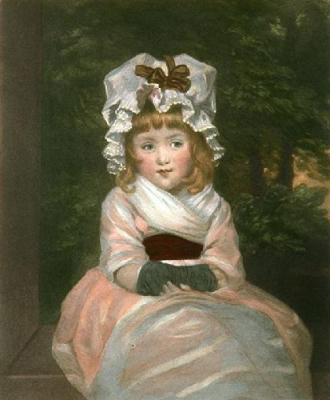In St Oswald's Church in Ashbourne you can find Thomas Banks' 1793 monument to Penelope Boothby, who died just before her sixth birthday. It sits in the family's memorial chapel alongside more conventional monuments from the 14th, 15th and 16th centuries, showing husbands and wives lying on their backs, eyes open, hands clasped in prayer. The contrast with Banks' creation is striking, bringing increased emotional depth to an already beautiful piece of sculpture. There is the white purity of the carrara marble which is sparkingly luminous in the dark interior of the church, against the warm burnish of the older figures' alabaster. There is the scale: the life-size child seems so tiny and fragile amongst the solid, adult figures which fill the rest of the chapel. In both cases the jolt is like seeing the small, white coffin of a child's funeral. But Banks' really striking innovation is to place Penelope on her side, naturalistically posed as if she were sleeping. You approach her from behind, it feels like an intrusion, and walk round the tiny bare feet to see the relaxed slumber of the closed eyes and slightly parted lips as her head rests easily on a pillow. Her hands are not quite clasped in prayer. Her skirts spread out in rippling folds which suggest life perhaps ebbing away. There is perhaps to great an emphasis on the body beneath, a hint of sexualisation in the bared shoulder where her gown has slipped, but ultimately Banks' has presented a wonderfully beautiful image of a child, frozen in eternal sleep. The preparatory model for the monument is in the John Soane Museum in London. It allegedly reduced members of the royal family to tears when it was exhibited at Somerset House and you can believe it. The dark patina of the plaster enhances the girl's features making the face all the more affecting.
What is even more remarkable, however, is that Banks' was not the only memorial which Penelope Boothby's father commissioned. In 1792 he asked family friend Henry Fuseli to paint her. The Apotheosis of Penelope Boothby shows her, not as a small child, but as an older girl on the cusp of womanhood. She is being carried up to heaven by an angel, guided by a cherub at the top of the vertical canvas. The earth is represented as a shadowy semi-circle below; a butterfly and a broken vase rather crudely symbolise the fragility of mortal life. The ghostly near monochrome palette and the dynamic diagonals of the composition can be seen as typical of Fuseli but for an artist who often dwelt on the macabre or the outlandishly shocking, there is a softness too. The diaphanous skirts create a sense that Penelope is already losing her corporeal form, yet she is looking and reaching upwards with pink cheeks and reddened lips, almost as of she is finding her heavenly (after)life. The angel, whose wings fade into the misty sky behind, looks down with maternal solicitude, her arms reaching round to, help her daughter on her last journey.






No comments:
Post a Comment